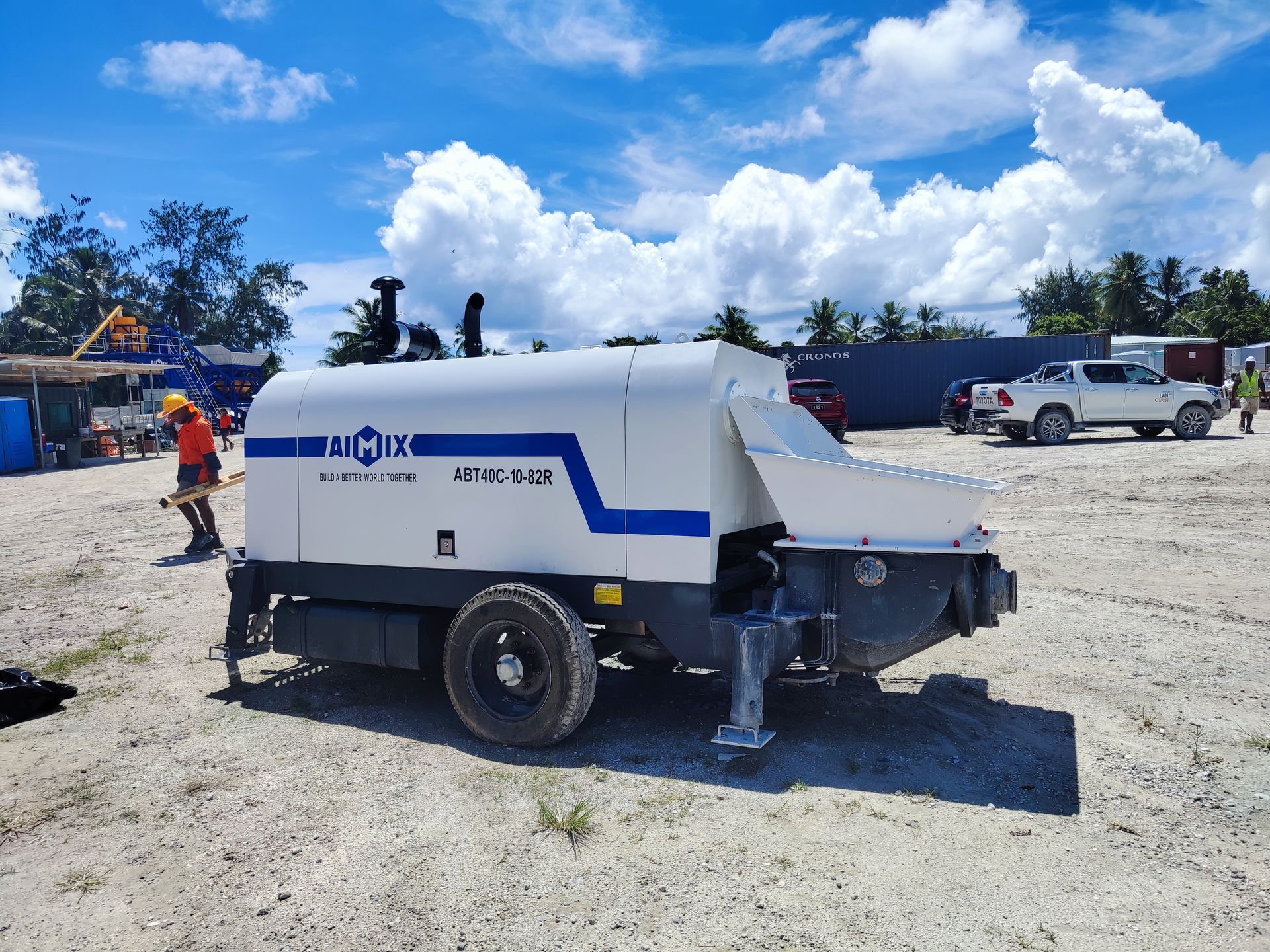Do I Need A Concrete Pump?
- By AIMIX Group
- •
- 28 Apr, 2024
- •
Concrete pumps: a necessity or a luxury in the realm of construction? This article delves into the factors influencing the need for a concrete pump, helping contractors and project managers make informed decisions for their endeavors.
I. Introduction
A. The Importance of Concrete Pumps in Construction
Concrete pumps have revolutionized the construction industry, offering unparalleled efficiency and precision in concrete placement. From high-rise buildings to infrastructure projects, these mechanized devices play a crucial role in streamlining the construction process.
B. Factors Influencing the Need for a Concrete Pump
Various factors come into play when determining the necessity of a concrete pump machine for a construction project. Understanding these factors is essential for making informed decisions and optimizing project outcomes.
II. Determining the Need for a Concrete Pump
A. Project Scope and Scale
Large-Scale Projects: For projects involving extensive concrete pouring, such as skyscrapers or industrial complexes, a concrete pump is often indispensable. The volume and height of concrete placement make manual methods impractical and inefficient.
Complex Structures: Complex architectural designs or structural elements may necessitate precise concrete placement in challenging locations. In such cases, the versatility and reach of a concrete pump are invaluable.
B. Site Accessibility and Constraints
Tight Spaces: Construction sites with limited access or confined spaces pose significant challenges for traditional concrete pouring methods. A concrete pump offers the flexibility to navigate tight areas and deliver concrete with precision.
Elevated Locations: Projects requiring concrete placement at elevated heights, such as bridges or high-rise buildings, benefit greatly from the reach and maneuverability of a concrete pump. It eliminates the need for cumbersome scaffolding and reduces safety risks associated with manual pouring. Learn more details here: https://concretemixerwithpump.com/how-to-operate-a-concrete-pump/.
C. Time and Cost Considerations
Efficiency and Productivity: Concrete pumps significantly enhance the speed and efficiency of concrete placement, minimizing project timelines and labor costs. The ability to pump concrete directly to the desired location reduces manual handling and accelerates construction progress.
Labor Costs and Material Wastage: Manual concrete pouring involves extensive labor requirements and is susceptible to inaccuracies and material wastage. Utilizing a concrete pump streamlines the process, optimizing labor utilization and reducing material costs.
III. Benefits of Using a Concrete Pump
A. Precision and Accuracy
Uniform Concrete Placement: Concrete pumps ensure consistent and uniform distribution of concrete, eliminating the inconsistencies associated with manual pouring methods. This results in improved structural integrity and aesthetics of the finished product.
Reduced Manual Labor: By mechanizing the concrete placement process, concrete pumps for sale in South Africa minimize the reliance on manual labor, reducing physical strain and labor costs.
B. Enhanced Efficiency and Productivity
Faster Concrete Placement: The efficiency of concrete pumps enables faster placement of concrete, accelerating construction timelines and reducing overall project duration.
Minimized Downtime: Concrete pumps minimize downtime associated with traditional pouring methods, allowing construction activities to proceed smoothly without interruptions.
In conclusion, while the need for a concrete pump may vary depending on the specifics of a construction project, its benefits in terms of efficiency, precision, and productivity are undeniable. Understanding the factors influencing the need for a concrete pump empowers construction professionals to make informed decisions and optimize project outcomes.
AIMIX Global Products
- Stone Crusher
- rock crusher
- Limestone Crusher
- granite crusher
- quartz crusher
- quarry crusher
- Gravel Crusher
- mobile crusher plant
- stone crusher plant
- crushing plant
- mobile impact crusher
- mobile jaw crusher
- mobile crusher
- mobile cone crusher
- mini self loading concrete mixer
- self loading mobile concrete mixture
- self loading concrete mixer for sale
- self loading concrete mixer truck
- self loading cement mixer
- asphalt plant for sale
- asphalt mobile plant
- drum mix plant
- mini asphalt plants for sale
- portable asphalt mixing plant
- asphalt hot mix plant
- batching plant manufacturers
- concrete plant for sale
- small concrete batch plant
- mini cement plant
- mobile concrete plant
- portable batch plant
- stationary concrete batching plant
- ready mix concrete plant
- how does a batching plant work
- concrete batching plant price
- ready mix concrete plant in bangladesh
- concrete batching plant in uae
- concrete batching plant indonesia
- concrete batching plant malaysia
- concrete batching plant for sale australia
- concrete batching plant Philippines
- concrete batching plant for sale UK
- concrete batching plant in saudi arabia
- concrete pump
- concrete mixer with pump
- mobile concrete pump
- portable concrete pump
- concrete trailer pump
- mini concrete pump
- small concrete pumps
- diesel concrete pump
- electric concrete pump
- hydraulic concrete pump
- dry mix mortar plant
- small dry mortar plant
- automatic dry mortar plant equipment
- big dry mortar plant
- dry mortar production line manufacturer
- dry mortar production line
- Tile adhesive manufacturing plant

